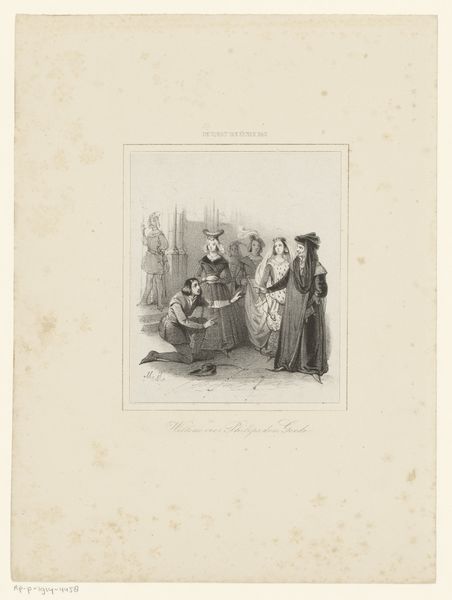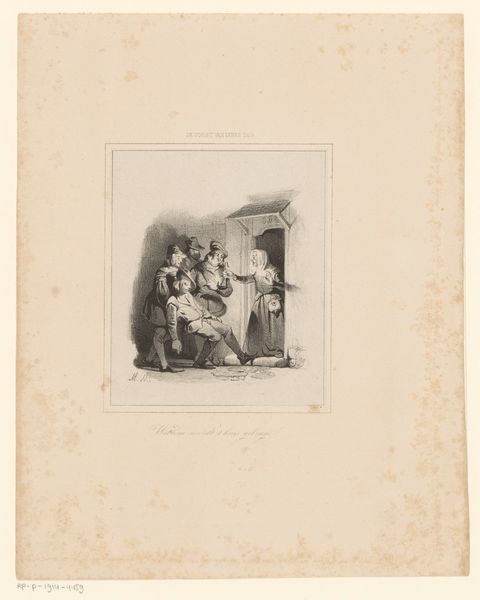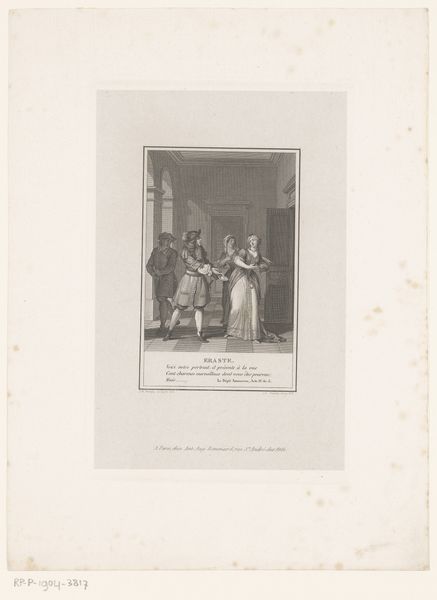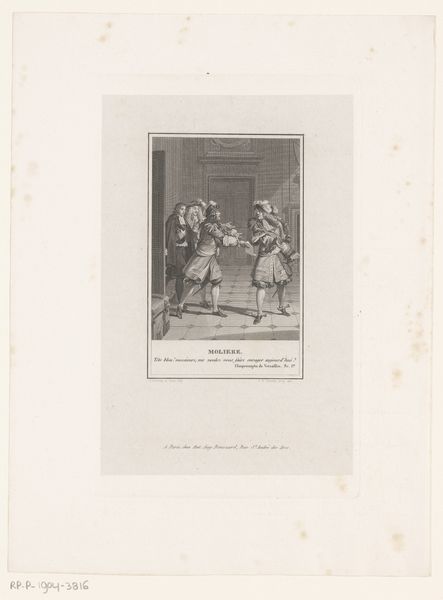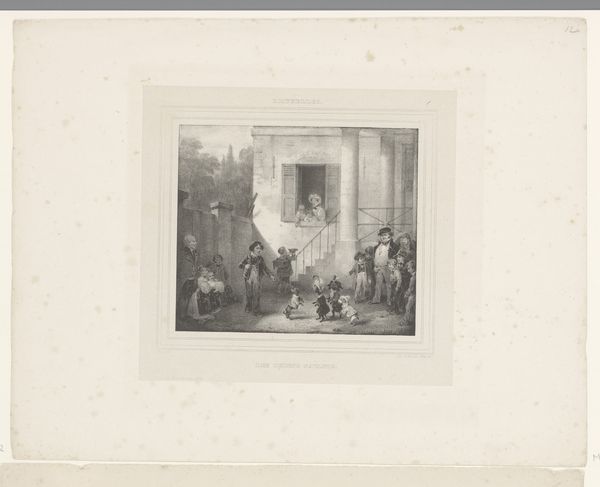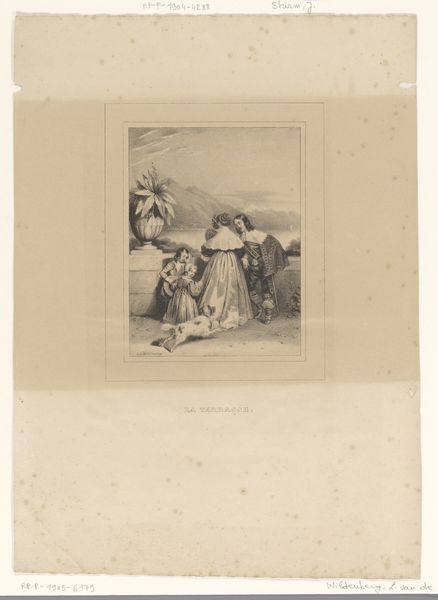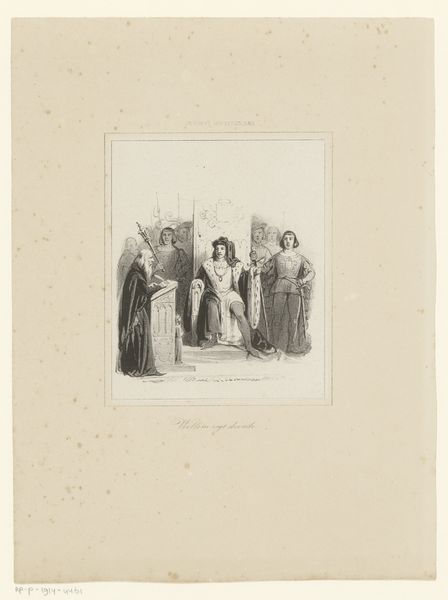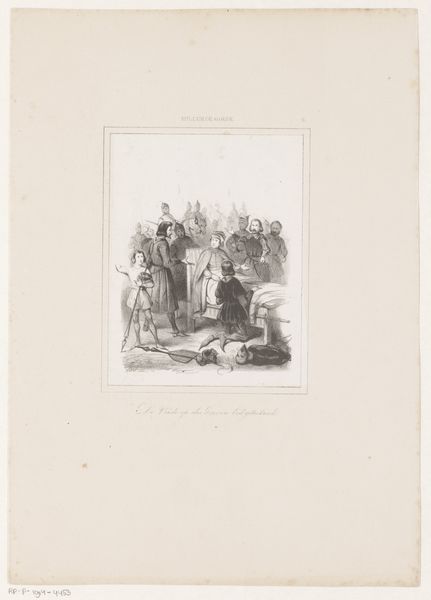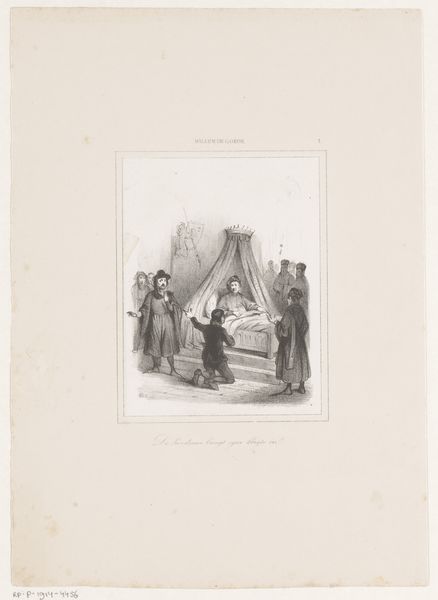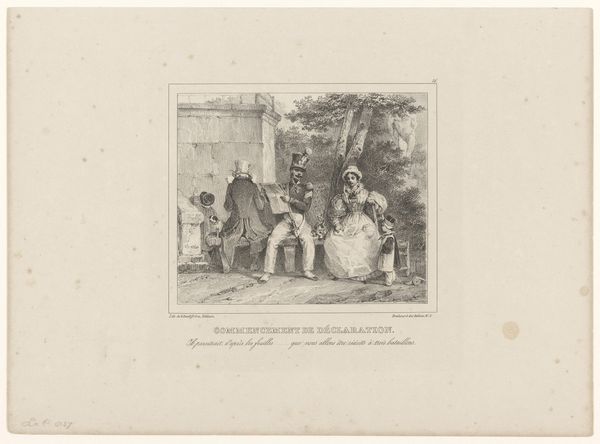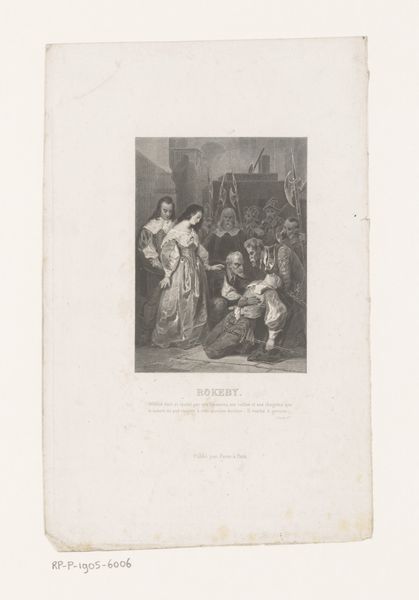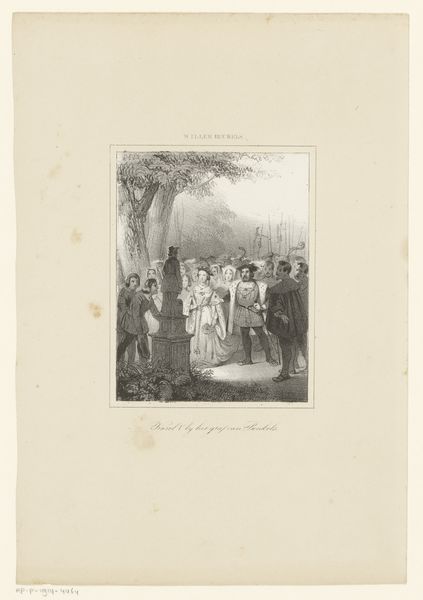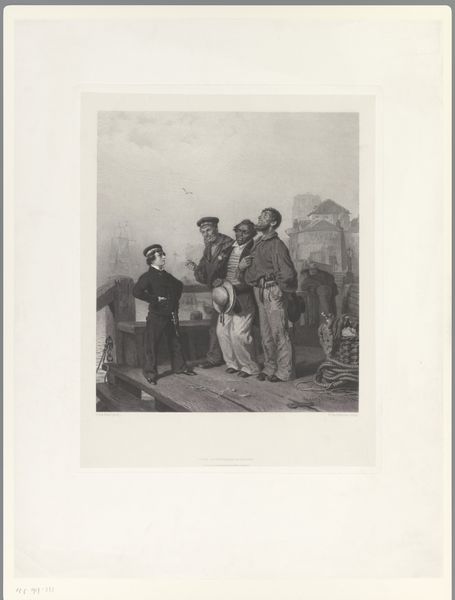
Zoon van Willem de Goede wordt tot ridder geslagen 1842
0:00
0:00
print, engraving
#
narrative-art
# print
#
romanticism
#
history-painting
#
engraving
Dimensions: height 315 mm, width 210 mm
Copyright: Rijks Museum: Open Domain
This print, made by Herman Frederik Carel ten Kate in the 19th century, depicts the son of William the Good being knighted. It’s created using a technique called etching, a printmaking process that relies on the corrosive effect of acid to create lines in a metal plate. The fine lines, created through careful, painstaking work, give the image a delicate, almost ethereal quality. Look closely, and you can see the way the artist has used the density of the lines to create shading and depth, bringing the scene to life. The texture of the paper itself also plays a role, its slight roughness adding to the overall tactile impression. Etching, as a printmaking technique, is inherently linked to reproduction and distribution. It allowed for the creation of multiple copies of an image, making it accessible to a wider audience. This democratizing effect challenges the traditional art hierarchy, blurring the lines between original and copy, and raising questions about the value and status of art in a rapidly changing world. Ultimately, understanding the materials and methods used to create art like this allows us to see it in a richer historical and social context.
Comments
No comments
Be the first to comment and join the conversation on the ultimate creative platform.
